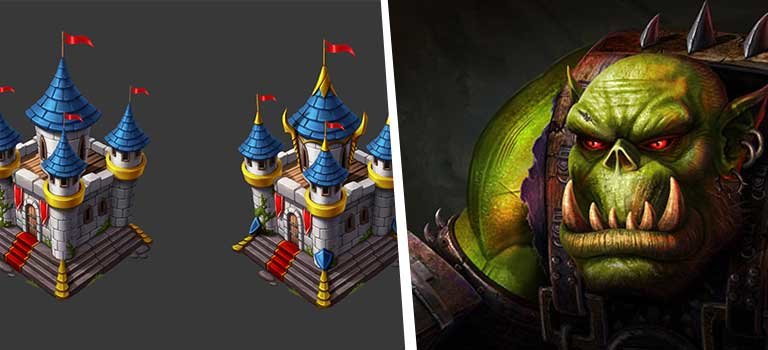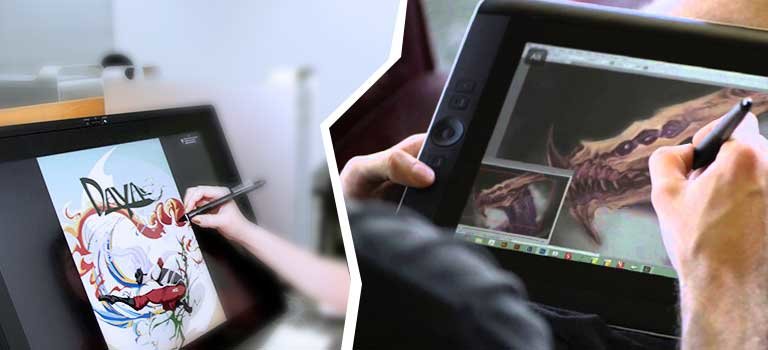When you think of your favorite game, chances are that the first that comes to your mind is the visuals. Creating artwork and visuals is a massive, important part of the game development process. This is why it’s best for game developers to opt for services from a game art and design company that is experienced in the production of high-quality game art. However, not many people understand the importance of art and design in games. Here we’ve put together some of the most common misconceptions about game art and design to explain the right way to go about this process.

Game Design Services
Many non-artists believe that the process of creating game art and design simply involves working with modeling software and manipulating vector art from third-party sources. Graphics are more than just visual aids to illustrate concepts; they are a powerful tool in conveying emotion and mood. Just as coding requires more than just a knowledge of programming languages, creating visuals too requires an in-depth understanding of art styles, colors and techniques. Trained artists, designers and modelers will know how to satisfy technical requirements without compromising on aesthetics. This is why it’s imperative to work with professional artists and designers while developing a game.
Smaller studios hiring a dedicated art and design team might not be feasible, it might make more sense to opt to outsource art and design services to a trustworthy, reliable and experienced development company that has the right resources.
Read more about the benefits of game art outsourcing.
Most game development projects have multiple artists working on various aspects of graphics and art. Without concept art to serve as a visual guide, each of these artists will invariably end up adding their own styles and minor variations while creating assets. Due to this, all the elements can somehow seem to be from different styles when put together. Developing concept art is a way to decide and define the artistic direction of all the visual elements in the game such as characters, environments, clothes, and objects. The process of creating concept art includes make quick sketches, illustrating chosen ideas and detailing them. This creates a visual reference for the tone, style, and theme of all assets in the game. Concept art is also vital to deciding the theme and mood of the game, and the amount of detail involved in all game assets. For example, a realistic World-war themed game would need all vehicles, weapons, and uniforms to be designed and detailed accurately based on historical facts and research. This is why creating concept art is an important step in the game development process.
While creating visuals for games and apps, many developers want to skip planning and pre-production and jump directly to asset creation. While this may appear to save time and be cost-effective, it can actually be counter-productive in the long run. The pre-production process is extremely important because it allows the creative team to analyze current visual trends and explore options for the look and feel of the game. With a dedicated pre-production phase, artists and designers can brainstorm on different ideas for the overall look and feel, and also try out multiple iterations of each idea. This gives everyone involved in the project the time to consider the merits of various options and decide what works well. It’s very common for developers to move straight to asset creation and then later realize that they want to opt for a completely different style for the visuals. Spending time on art and design in the pre-production phase can help reduce the chances of costly, time-consuming revisions at a later date and also help create a more cohesive set of visuals for the finished projects.
Many game developers make the mistake of concluding that visuals are unnecessary frills for a game. However, art and graphics are also important aspects that determine the success of any game. Gameplay is something that users discover when they start playing, whereas stunning visuals and graphics can actually entice even non-serious gamers into trying out new games. While the good gameplay is vital to ensuring user engagement, low-quality visuals can seriously hamper the overall player experience. A key aspect that determines the playability of any game is the amount of immersion that the user feels in the game world. The creation of hyper-realistic visuals that mimic the real-world is one way to achieve immersion. Users are more likely to spend time playing a game where visuals are stimulating and interesting. Even in 2D games with minimal graphical elements, well-designed visuals that are appealing and convey emotion play a huge role in attracting users and keeping them engaged.
Not paying attention to color schemes can be one of the biggest errors one can make while designing any game or app. The color scheme is one of the first things that makes a lasting impression on users. Choosing too many colors can make your app look cluttered while a restricted color scheme can make it seem dull. Choosing the right colors for menu items and action buttons can help users find information easily and also encourage the use of certain features. Colors are important in-game art and design as well. A well-chosen and thought out color palette goes a long way in creating an effective mood for any game. The color scheme not only sets the tone and ambiance for the game world but also plays a huge part in defining the overall experience for players. Colors can also be used to draw attention to important elements in the game. For example, high contrast colors are ideal for wayfinding i.e. for elements like signposts that show the player how to move in a game. Similarly, eye-catching colors need to be used to make collectibles and menu items stand out. Colors also play a role in defining game environments; warm tones like orange and red can be used to indicate hostile environments, while cool tones can indicate more neutral areas of gameplay.
Similar to apps, good game UI also determines how easily users can access information and interact with the various systems in a game. Poor UI design that does not allow clear navigation and accessibility can confuse users and deter them from playing your game. This is why it is important to spend time defining menu structures, navigation controls and screen flows before embarking on the design process. Intelligent UI design allows users to intuitively navigate menus and content. The type of UI is largely determined by the kind of experience that one wants to create. For example, basic menus and minimal storylines can be a good choice for casual games, where the intent is to get the user to play the game as soon as possible. More complex games with multiple options and detailed storylines would need a different approach to UI. Apart from this, UI can be used to define the importance of various t elements and menu items. It’s important to plan out the placement of features like health-meters, help buttons etc. in a way that allows easy access without disrupting the overall visual experience of the game.
Cover art is an often neglected aspect of game art and design. However, considering the number of games released every day, your game needs to stand out from the rest in order to make a profit. One way to do this is through cover art and screenshots. Both of these are powerful marketing tools that convey the essential spirit of your game. Some studios choose to work with external art and design companies to finalize their cover art and screenshots since this actually is an elaborate process all by itself. Appealing cover art can make consumers who haven’t heard of your game want to buy it. The placement of the game logo, characters, and environments all play an important role in creating attractive covers. Some of the strategies used by art and design companies to create cover art involve attracting attention using text and titles, using dramatic graphics or showcasing the main character in the best way possible. The final visuals need to convey the USP of the game in a manner that speaks to consumers. The same goes for screenshots since the right visuals can actually lead to more downloads. The trick is to choose the right sequence of screenshots that tell a compelling story.

With offices in India, USA, UK and UAE, Juego Studios is a reputed game development company offering creative art and design services for games, apps, simulations and more. Get in touch with us today for art development services.